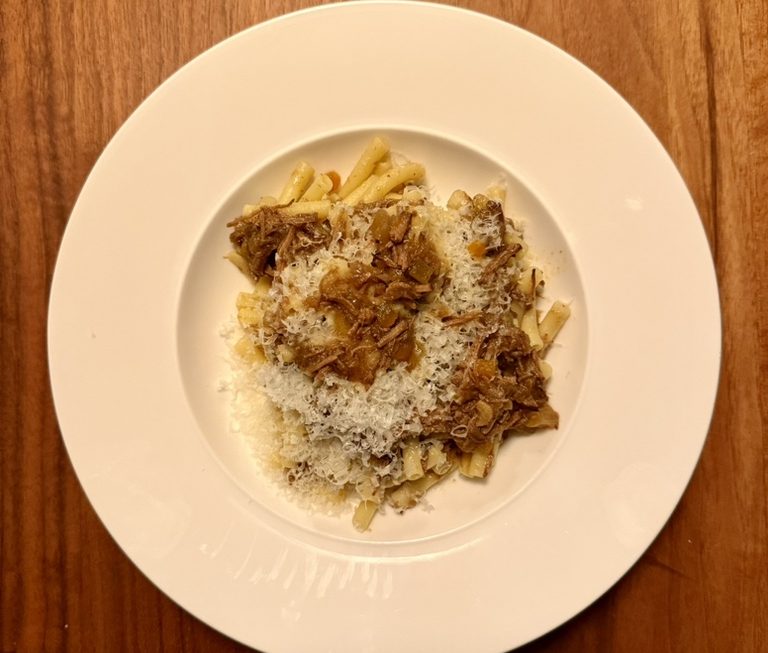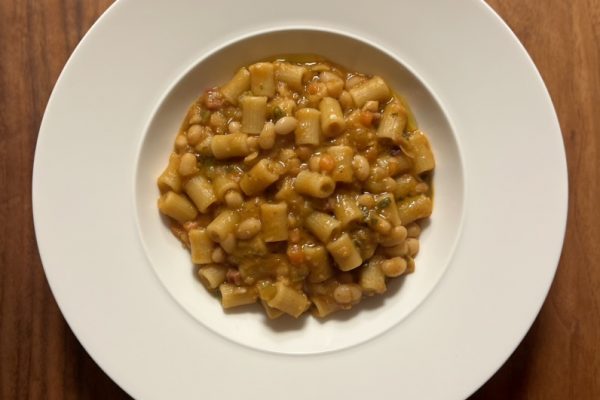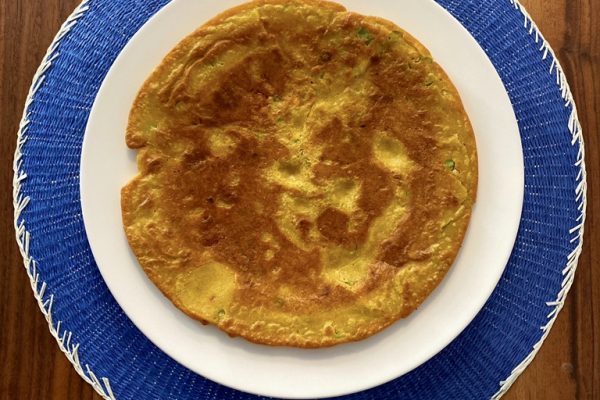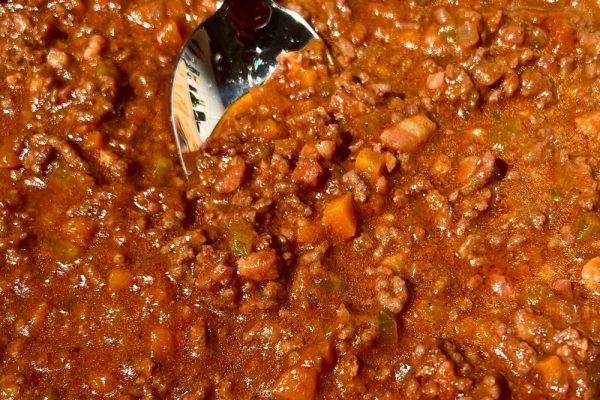Neapolitan cuisine has a character all its own, as can be seen in dishes such as pasta e patate. That’s right, pasta with potatoes. It tastes divine. Outside Italy, however, this cuisine often seems to be less well known.
While the famous ragù bolognese is prepared in northern Italy, things are quite different in Naples. Here, they cook a type of ragù alla genovese, which means ‘Genoese style’. The origin of the name is a culinary mystery. One theory says that Genoese chefs worked in Naples in the 15th century and introduced this style. Others believe it is simply a reference to a specific method of preparation. The fact is that this dish has nothing to do with the north-western Italian region of Liguria – except for its name.
Pasta alla Genovese is based on a slow braising process in which onions (lots of them!) and beef are simmered for hours to create a sweet and savoury sauce. The result is a deep brown, silky flavour bomb that is traditionally enjoyed with ziti or paccheri pasta. However, the dish also tastes great with maccheroni or rigatoni, which are usually easier to find.
You only need a few basic ingredients: some carrots and celery, a large amount of onions and some beef. It is important to choose a cut that is suitable for braising, i.e. one that has a lot of connective tissue. Cut the carrots and celery into small cubes, we also do this with one onion. The remaining onions are first halved and then cut into fine strips along the grain. The meat is cut into large pieces of 4–5 cm.
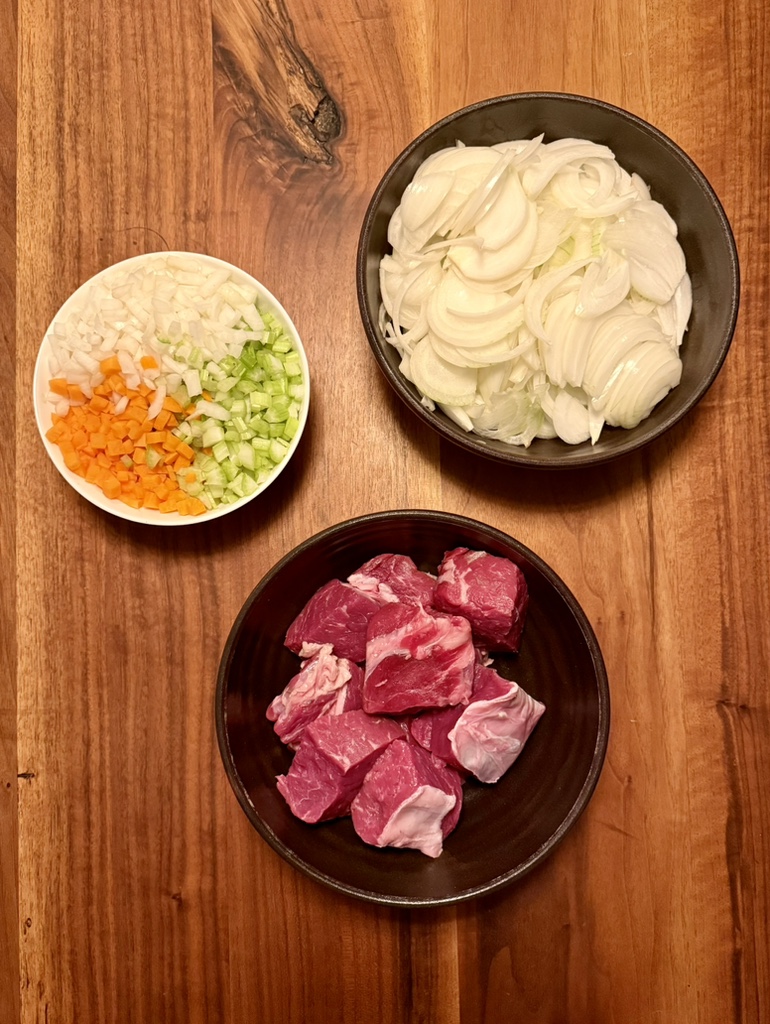
In a large, heavy pot – we use a cast iron casserole (also known as a Dutch oven) – heat a little olive oil over medium-high heat to brown the meat. The aim here is simply to brown the outside thoroughly to create flavour. The meat should not be cooked at this stage. Place the pieces in the hot pot on one side and leave them there until they can be easily removed from the bottom of the pot. Only then should you turn them over to the next side, and so on.
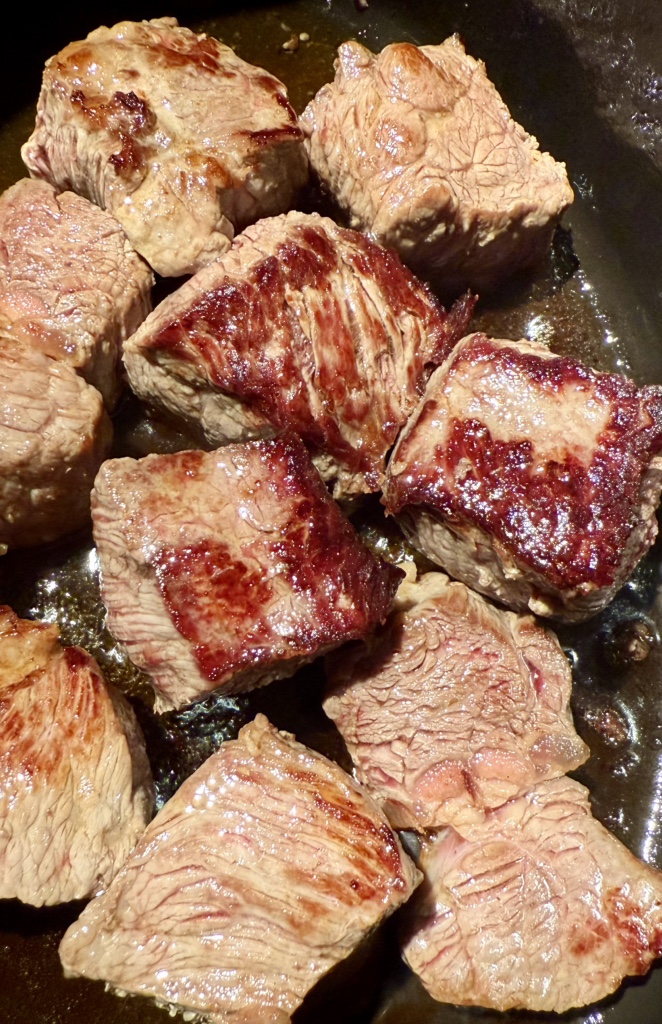
Then remove the meat from the pot and set aside in a bowl or deep plate. Now sauté the carrots, celery and diced onion slowly over medium heat, stirring occasionally – this is the classic soffritto of Italian cuisine.
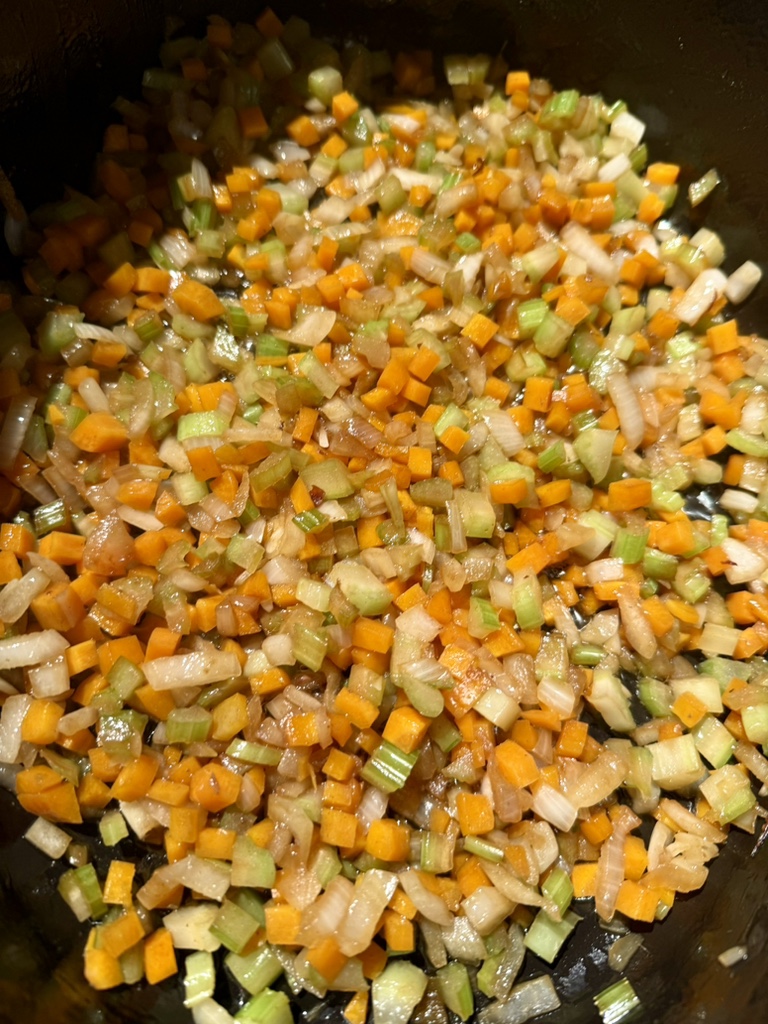
This takes a good 10 minutes, during which time you don’t have to stand at the stove. When the vegetables begin to smell fragrant, add the sliced onions. At this point, we add salt for the first time so that the onions release their liquid more quickly.
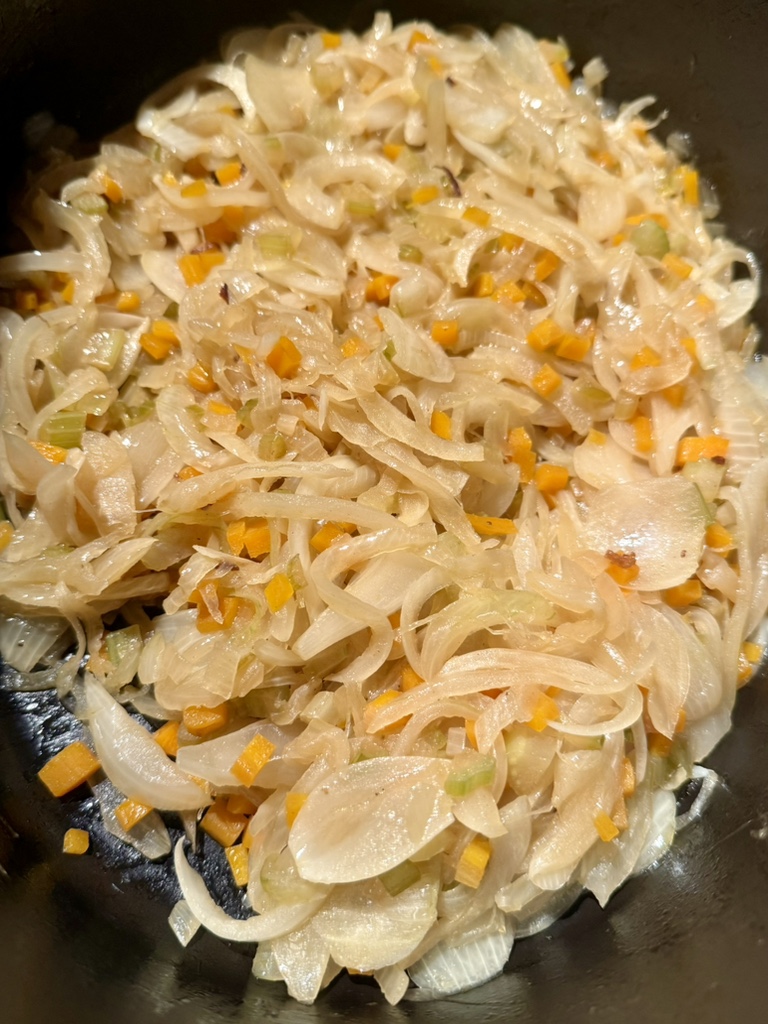
Stir everything and sauté the onions without letting them brown. They will first become translucent and then softer and softer. This process takes at least 20 minutes, during which time you will need to stir occasionally. We like to give the onions half an hour.
After about 15 minutes, we add bay leaves. We also like to season with a little coarsely chopped garlic, but this is optional. Some people like garlic in this dish, others don’t. Some recipes call for a whole bunch of parsley to be added at this point, but we don’t think it makes a significant difference.
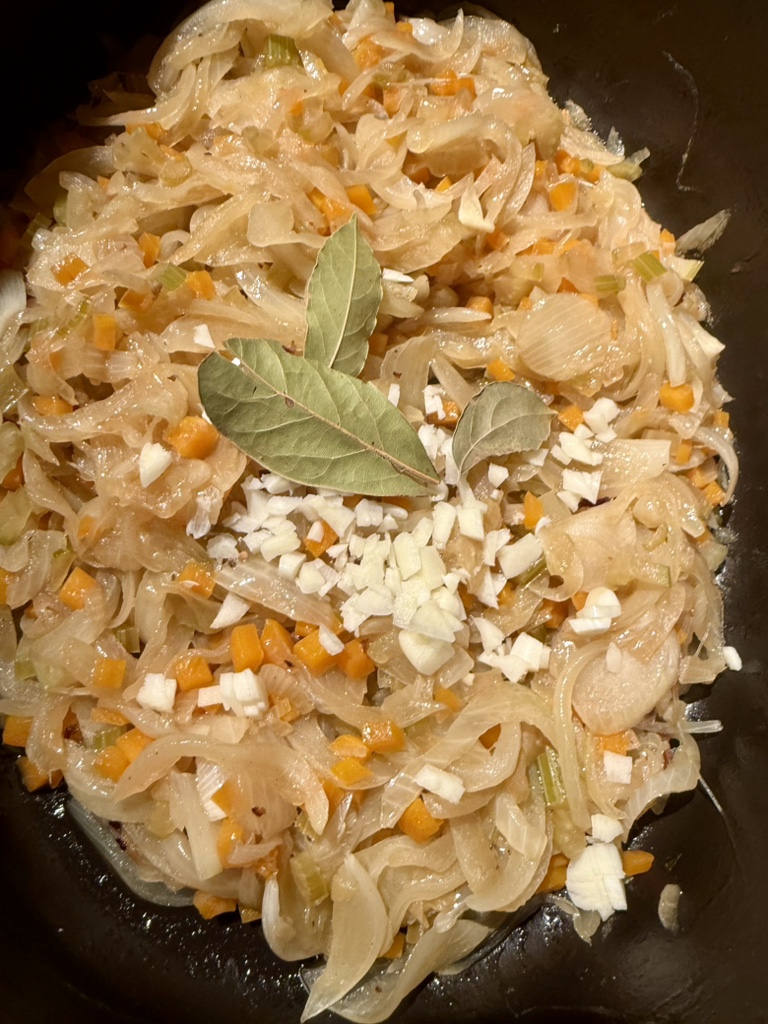
Then add a little white wine and stir well again before returning the meat to the pot, along with all the juices it has released while resting. Add a little water until the ingredients are almost covered. For even more flavour, you can also use beef stock, which we like to do when we have it in the larder.
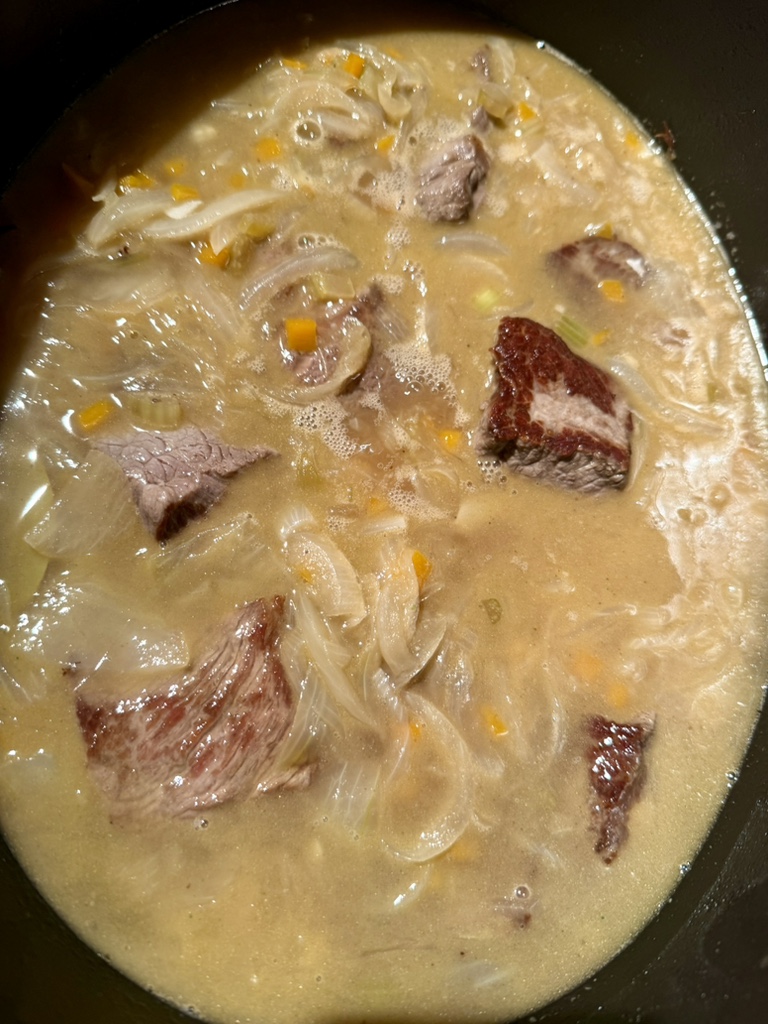
Bring everything to the boil briefly, then cover with a lid and braise the dish, which means that from now on it must not boil under any circumstances, but must simmer just below boiling point for a long time. This can be done on the hob at the lowest setting or by placing the pot in the oven. At 150 °C, braising takes about 3 ½ hours. We prepare everything in the evening, set the oven to 100 °C and simply leave the pot in it until the next morning. We believe that the lower temperature and longer cooking time produce even more flavour. Afterwards, it looks like this:
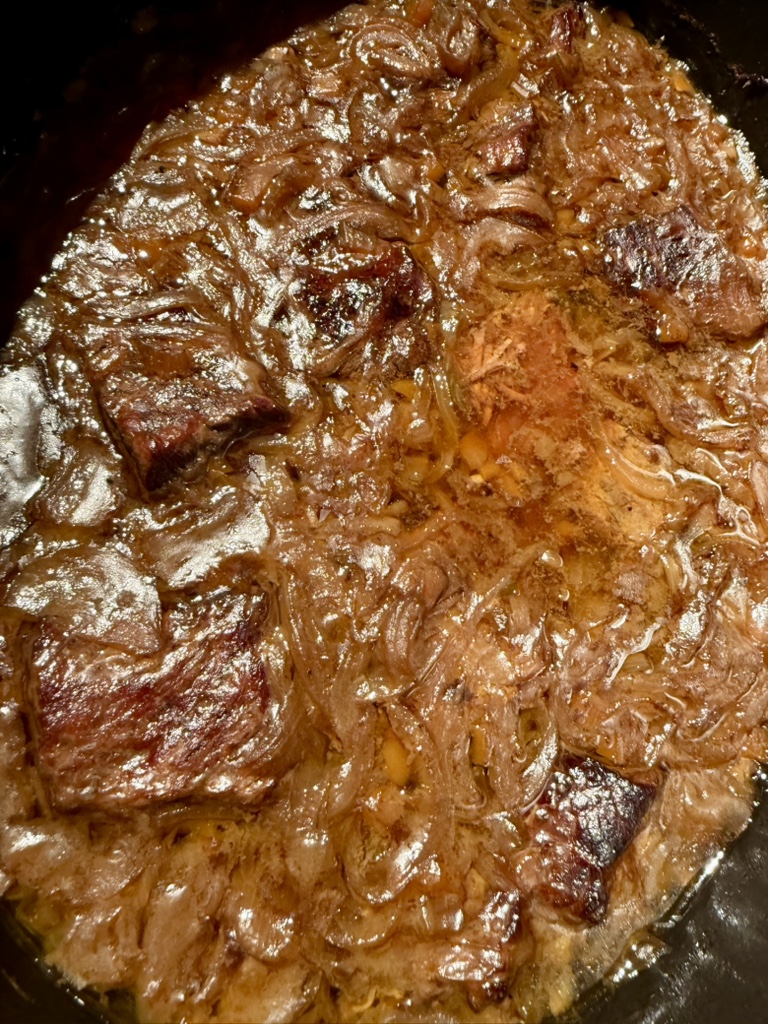
The meat is now shredded finely, which can be done with forks. If it has been braised well, it can also be easily pulled apart with a wooden spoon. The bay leaves are removed and the whole thing is seasoned with salt and pepper – then the ragù alla Genovese is done.
The sweetness of the onions paired with the deep flavours of the beef create an overwhelming taste composition that is deliberately not disturbed by too many spices – typical Italian cuisine. Everyone adds more or less sauce to their pasta according to taste and seasons it with a little Parmigiano Reggiano or Pecorino cheese or a few drops of olive oil – or none of these at all.
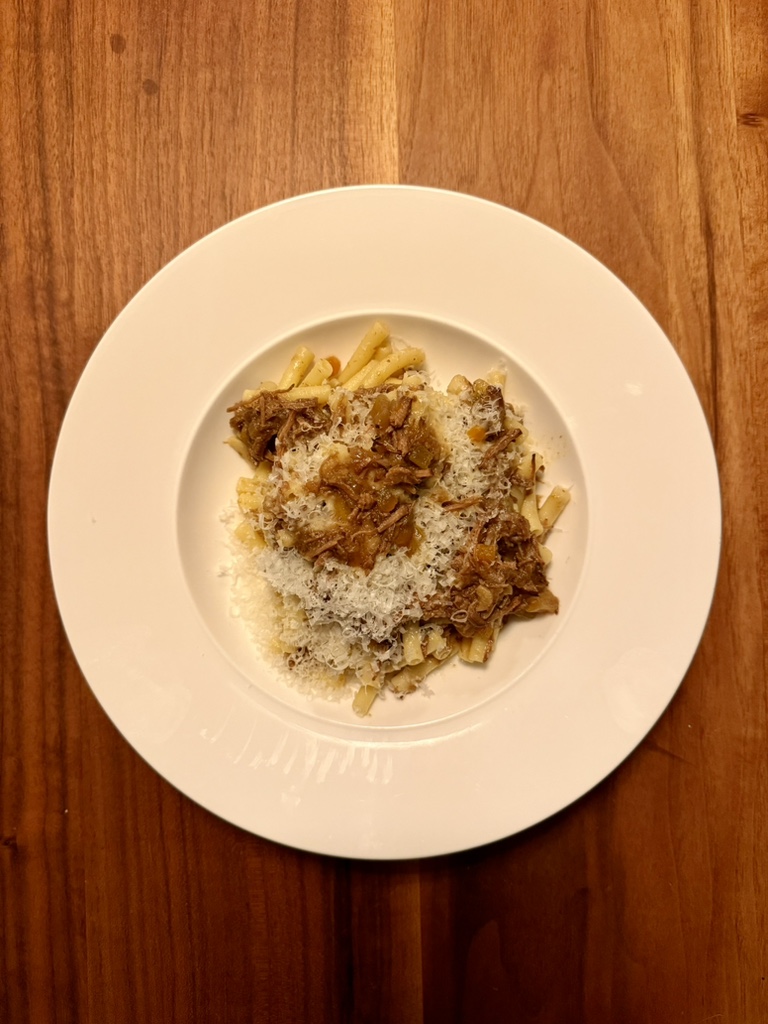
Enjoy.
And may the taste be with you.
Ingredients (for 4 people):
1.2 kg white onions
600 g beef for braising (e.g. chuck, brisket or shank)
100 g carrots
100 g celery
3 tbsp olive oil
Optional: 2–3 cloves of garlic
0.2 l dry white wine
Salt and pepper
2 bay leaves
Water or beef stock
320 g ziti or paccheri (or maccheroni or rigatoni)
Optional: freshly grated Parmigiano Reggiano or Pecorino
